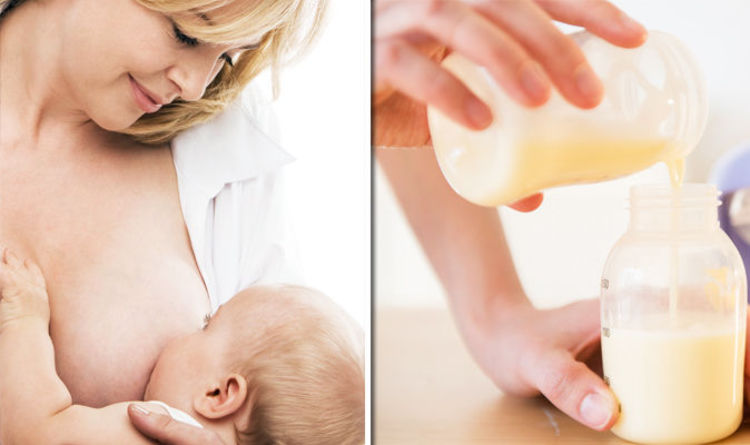Breast milk gone bad: How To Tell If Your Breast Milk Has Gone Bad? ( 3 Important Signs!)
Posted onHow To Tell If Your Breast Milk Has Gone Bad? ( 3 Important Signs!)
Have you ever spent hours pumping your precious breastmilk only to leave it on the counter and forget to put it in the fridge or in the freezer?
If that sounds like you, don’t beat yourself. It happens to the best of us.
It has happened to me a couple of times, and I honestly cried when I found out that my breastmilk has gone bad and I could no longer feed it to my baby.
It is not unusual for moms to get carried away with the everyday chaos that they forgot to store breastmilk properly. When this happens though, you need to be careful while investigating pumped milk before feeding the baby.
Freshly pumped milk can stay out up to 3 hours in room temperature. When the temperature is hot, however, breastmilk can turn bad quickly.
In such cases, moms need to know how to find out if their breastmilk has gone bad.
Table of Contents
What Happens When You Feed Your Baby Bad Breastmilk?
Your Baby May Not Eat:
Babies are smart, and they recognize even subtle changes in breastmilk.
Breastmilk that has gone bad has a sour taste to it, and your baby might not like the taste of it.
If your baby is making a big fuss and not taking the milk, then check for the signs that I will discuss below to see if the breastmilk is spoilt.
Your Baby Spit Up or Vomit :
A baby who had bad breastmilk can have mild tummy issues, and they might spit up or vomit. If you notice that your baby is excessively vomiting that it might cause dehydration, call your doctor immediately and seek advice.
Fever or Diarrhea:
Most of the time your baby should be fine if they accidentally consume some spoilt breastmilk. But, in rare cases, if the breastmilk was not pumped in a hygienic way to start with, then babies can get a fever or even Diahrea.
Always keep an eye on your baby and talk to your doctor about any unusual symptoms.
Severe Infections (that can cause death):
Rarely, giving baby contaminated breastmilk can cause severe infections that can even cause death.
After this reported incident CDC issues new rules for washing pump parts. I know there are many breastfeeding that suggest putting the used pump parts in a ziploc and storing it in the fridge between pumping sessions. The new guidelines about washing pump parts after every session might suck for some of you. When you are pumping more than 8 times a day, it can be very tiring to stand and wash pump parts after each use.
May be some of you might end up buying more spare parts, may be some of you can get help from a partner for washing the parts. No matter what you decide , please do keep in mind that practicing good hygiene is very important when it comes to pumping breast milk and take a ground that works for your family.
Breast Milk Pumping Guidelines:
I’m sure none of you would like a situation where you open your frozen breast milk only to know that it is no more good for your baby
We all feel the pain when we have to pour our precious milk over the drain.
Even worse, no parent would even dream of feeding their child contaminated breast milk.
Pumping properly, following breast milk storing and thawing guidelines can prevent breast milk from going bad.
Wash Hands Before Pumping:
One of the most common reasons for breast milk spoilage is cross contamination. Cross-contamination occurs when you do not wash your hands properly before handling breast pump parts while pumping.
Wash your hands with soap and rub your hands (palm to palm) for 20 seconds before every pumping session.
Sanitize Breast Pump :
If you are using the breast pump for the first time, make sure to wash it with soapy water, rinse them thoroughly under running water and air dry them.
If you are washing pump parts in a kitchen sink, do not put the pieces directly in the sink. Use a dedicated bowl, place your pump in it. Also, invest in cleaning brush that will get inside the nook and corner of the parts and get them clean.
I also recommend getting a separate drying rack like this one, to air dry pump parts.
Once or twice a week, do sterilize the pump parts by placing them in boiling water(in a sauce pan) for 10 minutes or using a steam sterilizer like this one.
Breastmilk Storage Guidelines:
Now that you have expressed ‘liquid gold’ , it needs to be stored properly. Keep in mind these main points while storing expressed breast milk.
Choose The Right Containers:
Glass bottles with a tight, secure lid are great to store breast milk. However, due to storage space constraints, many opt for plastic (BPA Free) storage bags specifically designed for breastmilk storage.
Don’t use thin plastic bags or zip lock bags that you would use for household storage; they might tear and leak breast milk.
Make sure the bags and bottles are sealed tight. When storing breast milk, you should also note down the date and time when the milk was expressed and use a label or a marker to put that in the bottle (or bag)
Store in Constant Temperature:
Remember to always store breast milk at the back of the fridge or freezer. It is advised not to store breast milk near the front door as there will be temperature fluctuations when you open and close the door often.
Always check your stored breast milk if there was a power outage and discard the milk if needed.
Breast Milk Usage Guidelines:
There is a definite time frame within which you should use up pumped milk. The time frame varies if the milk was freshly pumped or stored in the fridge or freezer.
For example, freshly pumped milk can stay good for 6 – 8 hours at room temperature.
Breast milk stored in the fridge should be used within 3 – 5 days and when stored in the freezer it can be good for 6 months.
Here is a detailed post on how long you can keep breastmilk out, and in the fridge or freezer.
Related : How Long Can Breast Milk Stay Out(Before It Goes Bad)?
Signs Breast Milk Has Gone Bad:
If you are religiously following the above guidelines, then you can lower the chances of breast milk contamination. However, to be safe, it is better to always check the milk for signs of spoilage before feeding it to your baby.
Here are the few checks that you can do to identify spoiled breast milk.
1.Taste:
According to Healthline, breast milk is compared to taste like ‘heavily sweetened almond milk.’ Breast milk tastes sweeter than cow’s milk.
The taste of the breast milk can also differ depending on the mother’s diet.
However, spoiled breast milk will have a very distinct sour taste ( just like bad cow’s milk).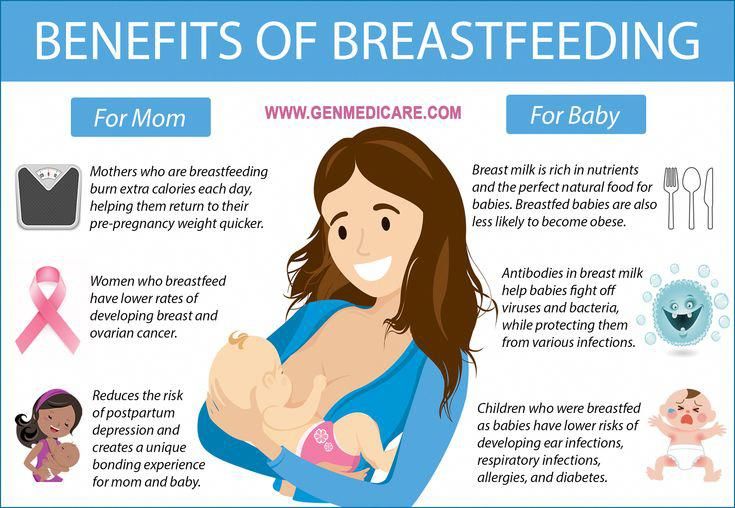
2. Smell:
Ever smelt breast milk? What does it smell like for you? I ask because mine has felt different at different phases. Sometimes it smells sweet; sometimes it has no smell at all.
Some mothers even complain that their breast milk smells funny – like soapy. This could be because of excess lipase.
Lipase is an enzyme that is present in mother’s milk; it helps break down the fats in the milk. When pumped milk sits out or in the fridge, there could be excessive lipase activity ( break down of fats) which can make breast milk smell soapy.
It is perfectly OK to feed this milk to your baby; however, some babies refuse to eat it because of the weird taste.
If your milk doesn’t have a soapy smell but smells rotten and foul, taste a little to be sure if the breast milk has gone bad.
3.Consistency:
It is normal for breast milk to separate into layers while stored away. This is because the fat separates, the richer hindmilk rises to the top and the thinner foremilk settles at the bottom.
However, the thawed milk should mix together when swirled. If you still notice any lumps or curdling, then your milk is surely gone bad.
Let’s Wrap Up:
Breast milk is the best food for your baby. So many moms out there, spend all their time and energy pumping breast milk because they want the best for their baby.
Pumping hygienically, storing in the right container and using the breast milk within the time frame recommended will all ensure that your hard work pays off.
If for any reason, you have doubts on the way you handled pump parts, or on how the milk was stored, it is always a good practice to do a quick ‘sniff test’ or taste to find whether the milk is still good for the baby.
Follow the breast milk pumping and storing guidelines, and remember to check for the 3 signs before you feed your baby.
BUY NOW
If you are a breastfeeding mom, you might be interested in learning more about nursing your baby. This online breastfeeding class will teach you A to Z about breastfeeding for only 19$.

-
Help! How Long Can Breast Milk Stay Out (Before Going Bad?)
-
Fore Milk Hind Milk Imbalance- What is It? and How To Fix It?
-
How To Increase Milk Supply While Pumping (10 Ideas that Work!)
Sharing is caring!
1264
shares
5 Signs Your Breast Milk Has Gone Bad
Breastfeeding
milorad kravic/E+/Getty Images
And how to prevent it from ever spoiling again.
by Olivia Youngs and Ashley Jones
Updated:
Originally Published:
There’s nothing worse than spending so much time pumping your breast milk only to find out that it’s gone bad sooner than you expected. Luckily, it’s not hard to determine if your milk has gone bad, and knowing the signs can save you from the pain of having to pump your milk just to dump it a few days later.
Not unlike cow’s milk, breast milk will spoil if left out in the open, or even in the refrigerator for longer than it should be, according to guidelines from The Centers for Disease Control and Prevention (CDC). “For full-term healthy infants, the recommendation is no longer than four hours at room temperature for freshly expressed breastmilk and one to two hours for thawed breast milk,” Molly Petersen, a Certified Lactation Counselor (CLC) at Lansinoh tells Romper.
This timing changes, however, once the milk has been stored in the fridge or freezer after pumping. Lactation consultant and Motif Medical Lactation Director, Ashley Georgakopoulos, tells Romper that pumped breast milk lasts about four days in the refrigerator. Additionally, Georgakopoulos notes that breast milk can be “frozen up to four months in a regular freezer, or up to 12 months in a deep freezer.
Following these recommendations is the easiest way to make sure that your milk doesn’t spoil. But, if you lose track of time (which happens often as a new mom), there are a few ways to tell whether or not your breast milk is spoiled.
1
It Will Smell Foul
Foul-smelling breast milk can indicate that your milk has gone bad. When this is the case, it will smell similar to rotten cow’s milk — that can’t-stand-it-being-anywhere-near-your-nose type of smell that makes you want to gag.
But breast milk that smells “off” doesn’t always mean it’s spoiled.
When in doubt though, Georgakopoulos says you’re better off safe than sorry when your milk doesn’t pass the sniff-test. “If it smells like spoiled milk or is questionable in any way, it may be best to throw it out,” she explains.
2
It Doesn’t Mix When Swirled
“Breast milk naturally separates as it settles, and can be mistaken for going bad as the fat goes to the top. It may be mistaken for curdling/souring,” Georgakopoulos says.
While swirling it around should do the trick to re-constitute the milk, if your breast milk doesn’t mix when swirled, or if there are chunks in the milk that won’t mix, it’s worth a closer look to make sure that your milk has been stored properly and it’s not spoiled.
3
It Sat In The Fridge For Longer Than 4 Days
Ceneri/E+/Getty Images
“Fresh breast milk can be refrigerated up to four days, but if it has been drunk out of, it needs to be used within 24 hours,” Georgakopoulos explains. Only pour into a bottle what you think will be used just to be safe.
Breast milk that’s been in your fridge for longer than four days is likely not usable. For maximum shelf life, store your milk in the «heart» of your fridge and not in the door, where the temperature fluctuates the most.
To help you keep track of time, it’s important to label all of your pumped breast milk. “All milk storage containers should be labeled with the date the milk was pumped,” Petersen says. “This will allow you to set up a system to ensure the oldest milk gets used first.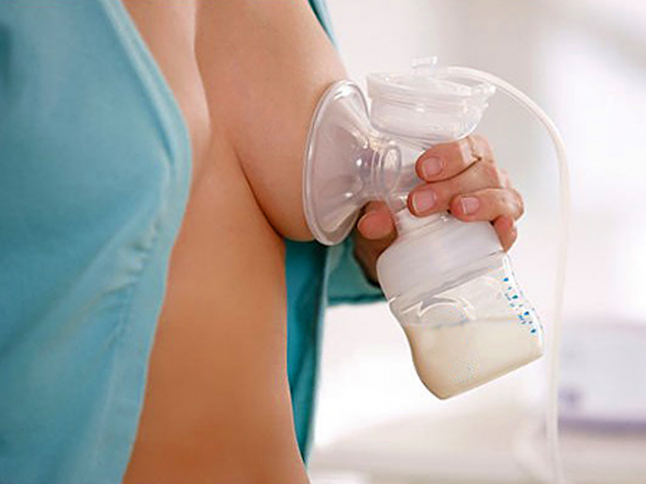
4
It Wasn’t Stored Properly
Like anything, if your breast milk wasn’t sealed or stored properly or the bag or container had a tear in it, the chances of your milk spoiling greatly increase. “When storing breast milk in the fridge or freezer, it’s important to use a container that is specifically designed for breastmilk storage,” Petersen says. “These breast milk containers are made with plastics that are safe and designed to stand up to storage conditions.”
Label your breast milk with the date and take note of what the guidelines are as mentioned above for the way that you’re storing it in order to help ensure that your milk stays fresh. If you’re storing it in the freezer, put it in there as soon as possible after pumping, and store it in the main part of your freezer instead of the door. “Many moms may be pumping at work or another place away from home, and in those cases, you should cool the milk in the fridge or a cooler bag as soon as possible after pumping,” Petersen says.
To thaw your frozen breast milk, Petersen says the best way is to put it in the fridge overnight. “If you need it quickly, storage bags can be run under warm tap water or sat in a bowl of warm water for a few minutes for a fast thaw,” she says. “Remember once milk has been removed from the freezer, it needs to be used within 24 hours.”
5
It Tastes Sour
Obviously, the easiest way to tell if your milk is sour is to taste a bit of it yourself.
“A sour taste can indicate if it has gone bad,” Georgakopoulos says. “Smelling is safer, but safe handling and good inventory is usually the best way to go, since breast milk does, in fact, keep very well.”
Remember though, your breast milk can still taste “off” to you due to the enzymes breaking down. But Georgakopoulos just recommends that “if in doubt, throw it out, or use topically.”
Experts:
Ashley Georgakopoulos, Motif Medical Lactation Director & IBCLC
Molly Petersen, Certified Lactation Counselor (CLC) at Lansinoh
This article was originally published on 998Z»>Oct. 21, 2016
How To Tell If Breast Milk Is Bad? Signs And Tips To Prevent
An unusual appearance, taste, or smell may tell you that the milk is not fit for drinking.
Research-backed
MomJunction believes in providing reliable, research-backed information to you. As per our strong editorial policy requirements, we base our health articles on references (citations) taken from authority sites, international journals, and research studies. However, if you find any incongruencies, feel free to write to us.
Image: Shutterstock
When you start feeding stored (expressed or pumped) breast milk to your baby, the first question that you may have is how to know if breast milk has gone bad?
Breast milk contains several nutrients, immunological components, and enzymes. Upon storage, changes in one or more of these components cause alteration in the breast milk’s appearance, smell, and taste.
Several parents report stored breast milk tasting and smelling soapy, while others describe it as metallic.
Read on to know the signs that tell the breast milk has gone bad and ways to prevent spoilage.
Signs Indicating The Breast Milk Has Gone Bad
Breast milk’s taste and smell vary from one mother to another. Therefore, knowing the common signs indicating milk spoilage can prevent you from feeding your baby spoiled milk.
Here are some ways you can determine milk’s fitness for consumption.
1. Appearance
Upon storage, breast milk typically separates into two layers — milk and cream layer. The fat rises to the top to form the cream layer, while the bottom layer is called the milk layer (1).
When milk is still fit for consumption, a quick swirl causes the layers to dissolve (2). However, if your breast milk appears chunky or maintains separate layers even after swirling a couple of times, the milk has likely gone bad.
2. Smell
Breast milk’s odor could vary among mothers and even across feeding sessions. These changes are based on several factors, such as the mother’s diet and medications. Besides, an off or soapy smell is a relatively common occurrence for mothers with high lipase-containing breast milk (3). In such a case, determining spoilage isn’t easy. However, a simple test could help.
For the test, freeze a small amount of your breast milk for a week. After a week, thaw the milk and check its scent.
- If you have high lipase milk, your milk will likely smell soapy, metallic, or fishy. However, the milk is fit for the baby’s consumption. You can deactivate lipase activity by scalding breast milk.
- If the milk smells sour or rancid, the milk has undergone chemical oxidation. Discarding such milk is advisable. A diet rich in PUFA or rancid fats and water containing free copper and iron ions could cause oxidation, giving a peculiar smell to breast milk.
3. Taste
If breast milk tastes rancid or sour, it has likely gone bad. You can perform the same test as above — store the milk for a week and evaluate the taste changes. Soapy-, metallic-, or fishy-tasting breast milk is likely due to high lipase activity. On the other hand, a sour or rancid taste indicates chemical oxidation.
In general, breast milk stored longer than recommended may indicate that milk might have gone bad. Freshly pumped or expressed milk stored in the refrigerator for more than four days or previously frozen and thawed milk stored for more than a day are likely to go bad (4).
What Happens When A Baby Consumes Spoiled Breast Milk?
You may sometimes not know that your stored breast milk has gone bad. In such instances, accidental feeding of spoiled milk is possible. A baby may exhibit the following signs when they ingest spoiled breast milk.
- Refusal to feed: Experts believe that persistent refusal to feed can signify that the baby doesn’t like the milk’s taste (5).
In case your baby is persistently refusing to consume stored breast milk or acts too fussy while feeding, check the taste of your milk for spoilage. When a breastfeeding baby refuses to feed, it is known as a nursing strike that may have several other reasons for it.
- Frequent spitting up or vomiting: Babies have sensitive digestive systems. If they consume spoiled breast milk, they are likely to experience gastrointestinal disturbances, such as diarrhea and vomiting. Some babies may also feel a lot gassier and pass odd-colored stools. If you notice your baby throwing up repeatedly, frequently passing watery stools after the feed, or displaying other digestive issue symptoms, check your breast milk and consult a pediatrician.
- Fever: Although uncommon, some babies may develop low to high degree fever after ingesting spoiled milk. It usually happens when the milk has bacterial contamination, most likely due to improper milk handling and storage.
In such cases, babies develop fever a few hours after ingesting the stored milk, often with additional symptoms, such as vomiting and diarrhea.
- Severe infection: In rare cases, feeding spoiled milk to babies can lead to life-threatening infections, such as Cronobacter Sakazakii infection (6). This infection can cause severe health issues, such as meningitis and sepsis (6). It is why the Centers for Disease Control and Prevention (CDC) recommend rigorously following the guidelines for proper handling and storage of human breast milk (4).
Some other symptoms that may arise due to spoiled milk consumption are dehydration leading to excessive sleepiness and inactivity, dark-colored urine, and fewer wet nappies than usual. If you suspect your baby has any health issues and related signs due to breast milk consumption, consult a pediatrician for guidance.
Tips To Prevent Expressed/Pumped Breast Milk From Spoiling
Below are the recommended guidelines to express or pump and store breast milk to maintain its quality (4) (8).
- Wash your hands and breasts with clean water and soap before pumping or expressing breast milk.
- Adequately clean and sanitize your breast pump and accessories, including the storage containers after every use.
- Discard the breast pump and its accessories if you notice a mold in their tubing or the equipment looks worn out.
- Tightly close the storage bottle or container’s lid so that the milk is safe from chemical oxidation and absorption of odor from other veggies and fruit.
- Thaw breast milk in order of storage, meaning thaw oldest breast milk first. Don’t refreeze thawed breast milk.
- Check stored breast milk for spoilage before feeding it to the baby. You may do so by checking the taste, color, and consistency of the breast milk.
- Don’t freeze the refrigerated milk to extend its storage time. You should keep the milk in the refrigerator immediately after pumping.
The milk can stay in the refrigerator at 40°F (4°C) for four to six days. However, do not move the bottle to the freezer after six days to extend its storage life. When frozen immediately after pumping, the milk should preferably be consumed within six months if the freezer is separate from the refrigerator and two weeks if the freezer is inside the refrigerator (2). Always place freezer milk at the back of the freezer and never on the door.
- Never store breast milk in the door of the refrigerator. Place the milk container at the back of the refrigerator where the temperature is coldest and stable since it is unaffected by the door’s opening and closing.
- Place the storage container in an insulated cooler bag or cool towel for a few minutes if you cannot immediately place it in the refrigerator. Freshly expressed or pumped breast milk can stay consumable at 60 to 85°F (16 to 29°C) for up to four hours. Remember, the longer the milk stays outside, the higher the chances of it going rancid.
- Keep the breast milk away from direct sunlight, heat, and air until you store it in the refrigerator or freezer.
- Avoid untreated tap water use for cleaning of breast milk storage accessories to prevent milk’s chemical oxidation during storage. You may also restrict supplements rich in unsaturated fats, such as fish oil tablets, if your breast milk is sensitive to oxidation and goes rancid easily.
1. How long does it take for breastmilk to go bad?
Freshly expressed breast milk can remain consumable for four hours when the room temperature is 77°F (25°C) or cooler. On the other hand, breast milk left at room temperature after feeding remains consumable for upto two hours (4). After two hours, you should discard the milk.
2. Can breast milk go bad inside the breast?
According to experts, breast milk always remains fresh in the breast (9). A mother’s diet and other factors can affect breast milk’s taste, texture, and appearance.
3. Can I mix breast milk from two different days?
According to experts, you can combine milk pumped on different days, if you (2):
- Cool freshly expressed milk for 30 minutes in the fridge first
- Add freshly expressed milk to frozen milk only if the amount of fresh milk is lesser than the frozen milk
- Use the mixed milk within the time limit of the oldest expressed milk.
Breast milk is susceptible to degradation soon. Since breast milk pumping and storage is a hectic process, understanding the mechanism behind milk’s degradation could be helpful. If you have expressed milk, ensure it is refrigerated immediately. Store the milk in an insulated cooler bag in impossible situations, but refrigerate it within four hours. Strictly adhere to the CDC’s guidelines on breast milk pumping and storage. If you suspect that the milk has gone rancid, check for its quality before feeding it to the baby. Alternatively, observe the baby for any signs of discomfort or other health signs after feeding them breastmilk. You may even consult a pediatrician for prompt medical attention if you notice any such symptoms.
Key Pointers
- Curdled or chunky appearance of stored breast milk may indicate spoiled breast milk.
- A baby refusing to feed, frequent spitting up, and fever may indicate the baby has ingested spoilt milk.
- Frequent hand washing, proper cleaning, and sanitation of breast pump accessories are some ways to prevent breastmilk from getting spoilt.
References:
MomJunction’s articles are written after analyzing the research works of expert authors and institutions. Our references consist of resources established by authorities in their respective fields. You can learn more about the authenticity of the information we present in our editorial policy.
1. Breast Milk Safety Storage; Oakland County, Michigan
2. Storing Human Milk; La Leche League International
3. Milk Issues; La Leche League International
4. Proper Storage and Preparation of Breast Milk; CDC
5. Bottle Refusal; IABLE
6. Madhura Sundararajan et al.; Notes from the Field: Cronobacter sakazakii Meningitis in a Full-Term Neonate Fed Exclusively with Breast Milk — Indiana, 2018; NCBI
7. Rowena McMullan et al.; Cronobacter sakazakii Infection from Expressed Breast Milk, Australia; NCBI
8. Pumping and storing breastmilk; U.S Department of Health And Human Services
9. Myths and Facts About Breastfeeding.
The following two tabs change content below.
- Reviewer
- Author
Swati Patwal is a clinical nutritionist, a Certified Diabetes Educator (CDE) and a toddler mom with over eight years of experience in diverse fields of nutrition. She started her career as a CSR project coordinator for a healthy eating and active lifestyle project catering to school children.
Julie Matheney did her Master’s degree in speech-language pathology and has worked on feeding and swallowing disorders for over a decade. As part of a hospital-based rehabilitation team, she works on helping children to feed and swallow. Having worked in the NICU, she discovered her passion for breastfeeding and became an IBCLC in 2017. She transitioned out of the hospital… more
-
12 Easy Lactation-Boosting Recipes For..
-
12 Easy Lactation-Boosting Recipes For..
-
Is It Safe To Drink Coconut Water When..
-
Is It Safe To Drink Coconut Water When..
-
High Lipase Milk: Causes, Effects And..
-
High Lipase Milk: Causes, Effects And..
-
Botox When Breastfeeding: Safety,..
-
Botox When Breastfeeding: Safety,..
-
Back Pain During Breastfeeding: Causes,..
-
Back Pain During Breastfeeding: Causes,.
.
-
What Causes Tingling In Breasts And How..
-
What Causes Tingling In Breasts And How..
-
Hair Dye When Breastfeeding: Safety,..
-
Hair Dye When Breastfeeding: Safety,..
-
Flaxseed And Breastfeeding: Safety,..
-
Flaxseed And Breastfeeding: Safety,..
-
2 Common Fruits You Should Avoid While..
-
2 Common Fruits You Should Avoid While..
| Feeding refusal: | |||
| Frequent regurgitation or vomiting: | |||
| Fever: | |||
| Severe infection: |
How to know if breast milk has gone bad
In today’s article, you will see How to tell if breast milk has gone bad in our detailed guide.
To manipulate breast milk is scary. Sometimes it seems that we are dealing with hazardous material, and it seems that handling it can be extremely difficult.
But in the end, it shouldn’t scare us more than any other food. To do this, it is enough to follow the rules that guarantee their best health, and breastfeeding is no exception.
Milk should always be stored in the coldest part of the refrigerator or freezer, avoiding the refrigerator door.
In the case of a freezer, try to find a drawer dedicated exclusively to breast milk to avoid transferring odors from other foods to the milk.
How to know if my breast milk has expired
This happened to me several times, and I honestly cried when I found out that my breast milk had gone bad and I could no longer feed my baby. how to tell if your breastmilk has gone bad, It is true that preservation recommendations can vary greatly.
In general, recommendations from the American Academy of Pediatrics or South American Milk Banks are more stringent.
see below How to know if breast milk has burst ;
1 — Look closely
Breast milk naturally separates after pumping: fat rises and water sinks. When the milk is still good, it mixes easily with a slight movement of the bottle.
If breast milk remains separated or if lumps float after remixing, it has probably gone bad and should be discarded.
2 — Smell the breast milk
If you have stored it in the refrigerator or at room temperature, the «smell test» can be a reliable way to tell if the milk has gone bad.
- Although differences in the smell of breast milk are normal, if your milk smells like sour or rancid milk, it has probably gone bad.
- However, this method may not be reliable if you have frozen breast milk. Breast milk contains lipase, which breaks down your baby’s fats.
In mothers with high levels of lipase in breast milk, this enzyme can give thawed breast milk a sour or soapy odor, although it is still perfectly safe.
To check if your milk tends to have this odor, freeze a small amount of breast milk for five days, thaw it and check the odor.
In the short time that you will be doing this experiment, you can be sure that the milk does not turn sour and just tends to get that smell after freezing, but it is still safe for your baby.
3 — try your breast milk
As with the «smell test» above, try your breast milk. It will taste different from cow’s milk, but any flavor is acceptable except rancid/sour.
If you store milk in the refrigerator and it tastes rancid or sour, it has probably gone bad and should not be given to your baby.
For frozen milk, follow the steps above to determine if milk acquires a sour (but safe) taste after freezing due to its high lipase content.
If this is not the case, but in some particular case your milk tastes sour, discard it as it has probably gone bad.
4 — Sequence:
During storage, breast milk may separate in layers — this is normal.
However, when shaking, melted milk must be stirred. If you still notice lumps or curds, then your milk has definitely gone bad.
How long does fresh milk keep in the refrigerator?
At temperatures from 0 to 4 degrees can be about 5 days. If the temperature is lower and it is done very hygienically, it can take up to 8 days.
And frozen?
Frozen milk can ideally be stored in the freezer for about 6 months. In some with temperatures below -20ºC, this may continue for several more months.
A at room temperature?
At room temperature it depends on how hot it is. For reference, if the temperature of the milk is below 24ºC, it would be better if it was not stored in the refrigerator for more than 4 hours.
The higher the temperature, the less time it can be stored safely.
How can I know if milk is bad?
When milk spoils, it smells very bad. Nothing to do with the sour smell it can acquire due to lipase degradation. Below you will find information on how to prevent the breakdown of fat.
Can I reheat?
No, it is better not to repeat the process after heating, as each time we heat the milk, we stimulate the growth of certain potentially pathogenic bacteria that may be present in the milk due to unhygienic extraction or even contamination:
Due to traces of milk in the pump or on surfaces on which parts of the pump have been placed.
What if they get hot and the child does not want to?
Leftover frozen and warm milk that the baby has not drunk can be stored for up to 30 minutes after feeding. They cannot be reheated, and if the child does not eat them, they must be thrown away.
What about the milk that the child did not finish?
It is better to throw away the milk that the child did not finish, as it has come into contact with his saliva and bacteria. The maximum and hastily can be offered in the next half hour and never warmed up.
How to defrost?
It is always best to thaw milk as soon as possible. A few years ago, it was recommended that milk be allowed to thaw in the refrigerator for several hours.
We now know that the best way to prevent loss of milk properties is to defrost it only when necessary.
How will I do? We offer four ways to do this:
- Heat water in a saucepan. When it boils, turn off the heat and put the container of milk inside. As an alternative to this method, heat water in a saucepan in the microwave.
- Remove and insert the milk container inside.
- Fill a container with hot tap water, put in the milk and let it thaw.
- If the water becomes too cold, repeat the process.
- If you have a bottle warmer, you can also use it to defrost/warm milk.
- If you freeze milk up to 100 ml, it will be much easier to thaw the milk.
- Do not defrost breast milk in the microwave or directly on the stovetop.
E
if allowed to thaw in the refrigerator?
Frozen milk can be thawed in the refrigerator within 24 hours. After this period of time, if it has not been used, it must be discarded.
However, it would be ideal to defrost at the moment we are going to offer it to the child and not let it thaw in the refrigerator. It is important to remember that thawed milk should not be refrozen.
Can I have a microwave?
First of all, make sure that the containers you are going to put in the microwave are suitable for this.
While there is a lot of controversy about using a microwave oven to warm or thaw breast milk, we offer information so you can decide what you want to do:
baby if the milk is not well mixed before giving it.
Secondly, the milk can overflow, which can lead to the disappearance of all living cells in the milk.
However, if we want to use a microwave oven to heat or thaw breast milk, we must take into account the following:
Milk must not be overheated (remember that milk leaving the breast is at the same temperature as the body).
We must stir the milk well before giving it to the baby, making sure that the temperature is uniform.
We must prevent the milk from boiling.
A baby can safely drink milk heated or defrosted in a microwave, and even if the milk boils carelessly and all living cells die, the milk will still retain many nutritional properties.
And this diet is irrelevant if the baby is breastfed all day long.
Can fresh milk be mixed with chilled milk?
This can be done when both are at the same temperature. It is best not to mix chilled milk with fresh milk to avoid bacterial growth.
When can I wait to freeze my milk?
If you have chilled milk that you won’t use for two or three days, it’s best to freeze it. That is why it is ideal to freeze milk for the same 24 hours. You must properly label and freeze it so that it is preserved in the most optimal way.
my milk smells sour
Breast milk contains lipase. Lipase is an enzyme that helps the baby break down the fat in breast milk and make it more digestible. When the fat in breast milk breaks down, it takes on a very strong rancid taste.
This taste does not mean that milk is bad or should not be drunk, and indeed, there are children who take it without problems. Some babies reject it, in which case it can be scalded to inactivate lipase in breast milk.
How do they go out with my expressed milk and warm the milk?
To go outside you just need to bring espresso milk, hot water in a thermos and a container if they can’t provide it to the place you are going.
If milk needs to be given for a long time or is too hot, it is better to put it in the refrigerator. If it’s not too hot or they wear out quickly, they can be brought to room temperature.
When the child shows signs of hunger, put hot water in the container and the milk container inside. After a few minutes, it can be offered to the child.
Breast milk — changes in its taste and smell.
: useful tips
Convenience is one of the many benefits of breastfeeding: in most cases, milk comes directly from the «producer» to the «consumer», and there is no need to worry about the collection, storage, preparation and freshness of the «product»
However, for one reason or another, many mothers express and save milk for their babies: some occasionally, others every day. This article contains useful information about what your expressed milk looks like and how to store it. All of the following recommendations apply to milk storage for healthy full-term babies.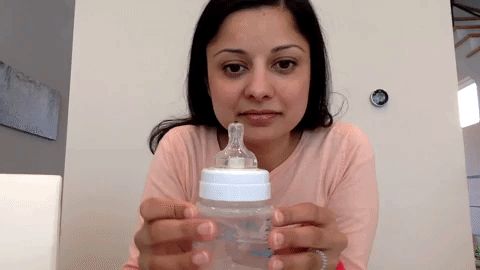
What does expressed milk look like?
Those who have never expressed before are surprised to see that expressed breast milk looks very different from the usual milk from a bag. Unlike homogenized commercial cow’s milk, breast milk separates into layers when allowed to stand. The fatter part floats up and forms the top layer. This does not mean that the milk has gone bad: if you shake the bottle slightly, it will again become homogeneous. Milk expressed at different times can also look different, as many factors affect its content and even color. The fat content of milk can change both from day to day and during one pumping session. Milk expressed at the beginning of a feed may look «fat-free» compared to milk expressed at the end of a feed, when the milk ejection reflex begins to deliver fatter milk to the nipple. The color of human milk can also vary.
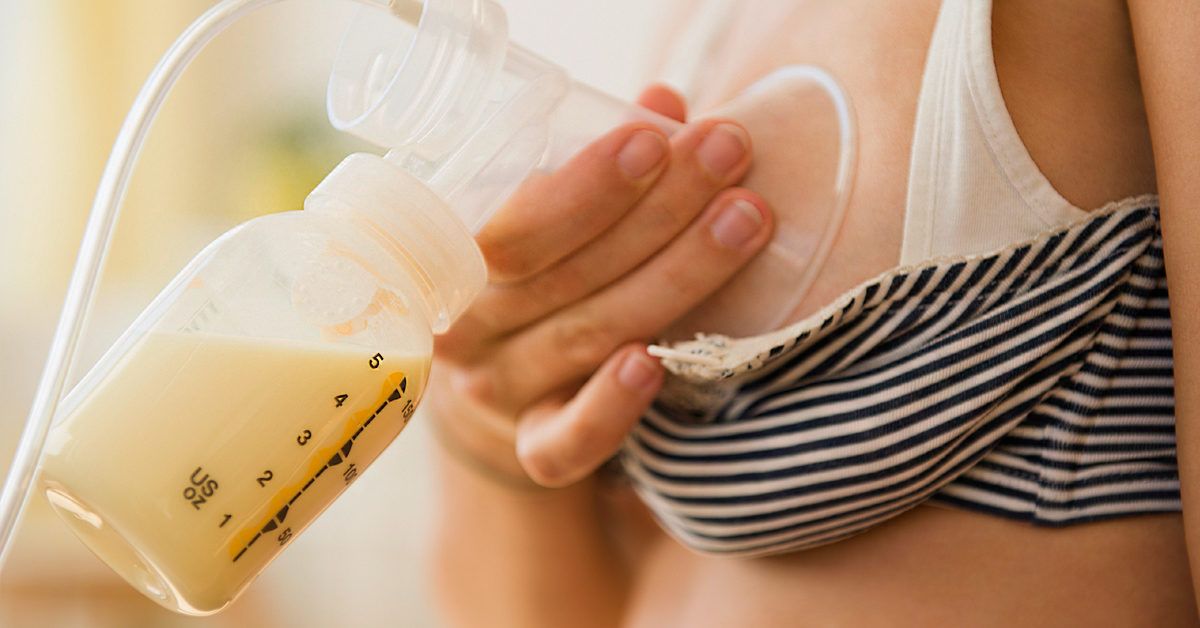
Smell of expressed milk
Normally, fresh breast milk has a delicate, slightly sweet smell. Occasionally, thawed milk may taste like soap, and the child does not want to drink it. In Breastfeeding: A Healthcare Professional’s Handbook, Dr. Ruth Lawrence states that if milk is stored in refrigerator freezers that do not require defrosting («self-defrosting» freezers), the fat composition of the milk can change due to the freeze and thaw cycles that constantly alternate in such freezers. Some mothers report that their milk smells of soap as soon as it is chilled, whether it has been frozen or not. Dr Lawrence writes: “When mothers heated their milk to a very hot (but not boiling) state, and then quickly cooled and frozen it, the soapy smell was not so noticeable, and the children agreed to drink heated milk treated in this way. The above process killed the lipase (fat-breaking enzyme) and stopped the fat-breaking process.” However, heating milk to such high temperatures can adversely affect the levels of nutrients, one of which is ascorbic acid (vitamin C).
How to choose a suitable milk container
Express milk into a clean container. The container for long-term storage of milk must be tightly closed. The container can be either glass or plastic — there is disagreement as to what material the milk storage utensils should be made of so that the beneficial substances and immune factors contained in it are best preserved. According to recent studies, milk can be stored in both plastic and glass containers without compromising its quality composition. The Breastfeeding Answer Book recommends the following procedure for selecting containers for storing breast milk. In the first place are vessels made of glass, in the second place are vessels made of transparent hard plastic (polycarbonate), and in the third place are opaque plastic (polypropylene) vessels.

If there is no refrigerator at hand
If a breastfeeding mother is at work and wants to continue breastfeeding, even if there is no refrigerator at work, there are ways to save the milk she has expressed throughout the day. Studies have shown that human milk has an amazing ability to inhibit bacterial growth, and may not spoil at room temperature for up to 10 hours from pumping.
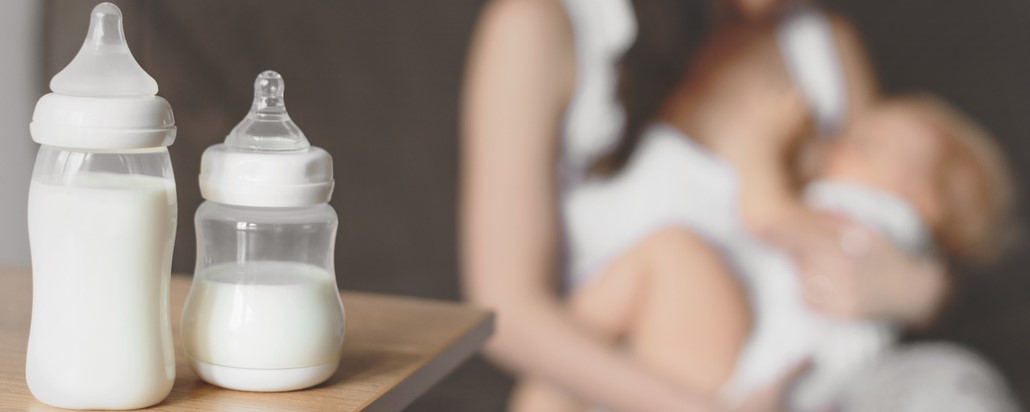
Storage of milk outside the home
A breastfeeding mother should have the right to store milk outside the home, for example at work, or in the refrigerator of a child in a nursery. There is no need to take any special precautions that are usually associated with the storage of bodily fluids in public areas.
Information on storing breast milk:
Whose babies are born full term
Who will feed expressed milk at home rather than in the hospital
Who wash their hands before pumping
Who wash vessels and containers with hot soapy water and then rinse them thoroughly with breast milk
Namah
intended for long-term storage, the date of pumping must be indicated.
Colostrum (expressed within 6 days of delivery):
12 hours at room temperature 27-32 C (80.6-89.6 F)
Mature milk
at 15 C (59-60F) — 24 hours
at 19-22 C (66-72 F) — 10 hours
at 25 C (79 F) — 4-6 hours
refrigerated at 0-4 C (32-39 F) — 8 days
Freezer compartment with separate door — 3-4 months (temperature fluctuates due to frequent door opening)
Fixed (separate) deep-freezer -19 C (0 F) — 6 months or more.
How to store breast milk
in thick plastic or glass containers
in special bags for storing frozen milk
before adding a new portion to already frozen milk, it must be cooled
How to heat milk
To defrost or heat milk, place the container under warm tap water. Do not heat milk to a boil; shake the container before checking the temperature of warmed milk; never heat breast milk in the microwave.
Thawed milk
Frozen milk that has been warmed up can be left in the refrigerator for up to 24 hours. Such milk cannot be refrozen
Many mothers say that one of the advantages of breast milk is that there is no need to store it. The product produced naturally, as needed, comes from the «producer» directly to the «consumer». There is no need to think about how to prepare formula, how to sterilize bottles and many other unnecessary things. It is enough to always be close to your child and listen to his requirements.
The benefits of breastfeeding for a child
To date, no complete analogue of mother’s milk has been invented. Its composition is approved by nature itself. Even the most expensive and high-quality adapted mixtures cannot satisfy the needs of the baby by 100%, as breast milk does. It contains:
- enough vitamins in the most favorable form for absorption;
- the required amount of easily digestible iron — it is absorbed from breast milk in the amount of 70%, from cow’s milk — 30%, and from substitutes — 10%;
- optimal ratio of saturated and unsaturated fats, Omega-6 and cholesterol;
- a complete protein in a balanced amount that improves immunity;
- there is enough water, which allows the child not to drink additional water before the introduction of complementary foods;
- the optimal ratio between calcium and phosphorus, which is not observed in any of the known types of milk;
- hormones and biologically active substances necessary for the baby, which are not synthesized independently.
To retain all the benefits and nutritional value of this product, a woman who has to express it for a variety of reasons needs to know how long her breast milk lasts in the refrigerator. So she can give her baby the most valuable thing that nature has, and not doubt the freshness of the product.
In the life of a breastfeeding mother, sometimes situations arise when she involuntarily has to give her baby not a breast, but a bottle. In this case, a woman needs to take care in advance to prepare and place breast milk in the refrigerator. How long does this food keep? This will depend on a number of factors. These include a specific place in the refrigerator, and the dishes used for pumping. But first, let’s list a few cases when a mother has to collect milk in a bottle:
- The need to leave the baby for a long time with dad, nanny or grandmother. This situation often occurs when the mother goes to work, when traveling on a long-term business trip, etc.
- Breast problems. If cracks or other microtraumas appear on the nipples, feeding for a woman becomes a real test. It takes a little time to heal the breasts, during which the mother expresses her milk into a bottle and uses it to feed the baby.
- Feeding a premature baby. Due to physiological reasons, such crumbs are not able to extract milk for themselves from the breast. Feeding with expressed milk from a bottle is a temporary or only correct solution.
What does expressed milk look like?
Mother’s milk differs from cow’s milk, which is presented on store shelves, not only in composition, but also in appearance. Firstly, if you let it stand for a while, you can see how it exfoliates. As a result, the fatter part of the milk floats to form the top layer. But this does not mean at all that the product has deteriorated and become unsuitable for feeding. You just need to shake it to make the milk homogeneous. After that, you can start feeding.
Secondly, breast milk differs in color and fat content.
Smell of expressed breast milk
Most people judge the freshness of a product by smell. But what about breast milk? How can you tell if it’s fresh or spoiled?
Even if a mother knows how long breast milk is stored in the refrigerator and strictly observes the terms and temperature regime, it is important to make sure that it has not sour before feeding. To do this, just open the bottle and smell the product.
Where should you store your expressed milk?
This is not a refrigerator or freezer. The choice of one or another place for storage depends on how long it is planned to keep it there. We are talking about containers in which it should be expressed. And here you should follow certain rules:
- The container for expressing should be not just clean, but sterile.
- The storage container must be tightly closed to prevent foreign odors from entering it.
- Utensils can be made of glass, transparent or opaque plastic — the quality of the expressed milk and its nutritional value will not be affected.
The time factor also influences the choice of this or that dish. To do this, you need to figure out how long breast milk is stored in the refrigerator.
Which containers are suitable for storing expressed milk?
Depending on whether you plan to store the product — in the refrigerator or in the freezer, it is recommended to use different containers. The correct choice of dishes will determine how much expressed breast milk is stored in the refrigerator, and how much in the freezer. Otherwise, it can deteriorate much faster.
The following utensils are intended for storing expressed milk:
- for the refrigerator — plastic containers or bottles with tight-fitting lids;
- for the freezer — special disposable bags for frozen milk.
Before adding the next portion to the frozen milk, it must first be cooled well in the refrigerator. All containers, especially those intended for long-term storage, must be labeled with the pumping date.
Storage of expressed milk without refrigeration
What should a mother do if she is at work? To determine her actions, she needs to know how long expressed breast milk is stored without a refrigerator.
So, a working mother needs to remember that breast milk is stored for as long without a refrigerator as the working day lasts — 8-10 hours. At a temperature of 15 degrees, it will not disappear even after 24 hours. If it is very hot in the office or on the street, the bottle can be placed in a cooler bag or in a thermos. Otherwise, after 4 hours it may turn sour.
How long does breast milk last in the refrigerator and freezer?
What are the storage recommendations for this product? The exact timing depends on a number of factors. First you need to find out how many days breast milk is stored in the refrigerator. At a temperature of 0…+4 °C, it can be kept on the shelf for no more than 8 days. If you plan to store milk for longer, then it is better to freeze it. But in this case, it is important to adhere to the deadlines.
Frozen milk can be stored in the freezer inside the refrigerator for a maximum of two weeks. It can be kept in a separate freezer compartment for 3-4 months. The longest time to store expressed milk is in a stationary freezer. At temperatures around -19°C it is stored for 6 months.
How to defrost or heat milk correctly?
It is equally important to learn not only how to properly express and store mother’s milk, but also how to prepare it for feeding. Simply taking it out of the freezer or refrigerator and reheating it in the microwave or on the stove would be wrong. In this way, you can even bring it to a boil. What to do in this case?
To defrost or warm breast milk, simply place the bottle or container under warm water. But don’t heat it up for too long. To determine whether the expressed breast milk is warm enough, be sure to shake the bottle and squeeze a few drops from it onto the back of your hand. The temperature of the product intended for feeding should not be higher than the temperature of the human body.
How long does thawed breast milk last in the refrigerator?
Every person can heat milk under running hot water: dad, grandmother, and nanny. But no less relevant is the question of how many hours breast milk is stored in the refrigerator, if it has already been previously thawed. Can it be frozen again and reused?
According to pediatricians, if frozen milk has been warmed up, it can be left in the refrigerator for a maximum of 24 hours. Before feeding, the bottle is simply heated in warm water. Do not refreeze this product.
Dr. Komarovsky’s opinion on the storage of breast milk
Many mothers are interested in what a well-known pediatrician thinks about breastfeeding. About this, the doctor prepared a whole series of TV shows, publications and books, which it is advisable to familiarize yourself with even before the birth of the baby. As for the question of how long breast milk is stored in the refrigerator, Komarovsky fully agrees with the recommendations presented above.
In addition, the doctor draws his attention to the fact that all recommendations were made for those mothers who:
- gave birth to full-term babies;
- are going to feed the baby with expressed milk at home instead of in the hospital;
- wash their hands before collecting milk in a container;
- thoroughly rinse the dishes washed with detergents in hot water.
In general, the doctor has a positive opinion about breastfeeding and pumping under certain circumstances.
Views: 6 530
The main questions that concern nursing mothers: is breast milk enough for a newborn, what is its consistency and color? Also, what does milk taste like? This is the last question we will consider in this publication. When the baby reluctantly takes the breast, then the mother thinks about the taste of her breast milk. However, if a woman does not like its taste, then a child may like it.
For newborns, the first meal in the maternity hospital is mother’s milk. The baby begins to gradually get used to its taste. A woman should be aware that the taste of breast milk can change even during the day. The baby will not notice the change in the taste of the milk. And when a woman eats something that is not in her usual diet during lactation, the baby can take the breast reluctantly. Therefore, it is better for mom to adhere to a balanced diet and a healthy lifestyle. We need to walk more in the fresh air, try to rest more often and not worry. Also, stability in the presence of a sufficient amount of milk, its smell and taste will ensure the absence of the habit of smoking and drinking alcohol.
Proper nutrition of a breastfeeding woman will not greatly affect the taste of milk. It can change significantly with the use of medicines, spices, products with a pronounced taste and aroma, as well as those in which there are food additives.
Foodstuffs
– Onion and garlic.
Breast milk will be tasty and appetizing if a woman eats garlic. It helps to actively produce milk. Garlic promotes good lactation. This fact was confirmed by British experts. Also, onions are a good supplement for breast milk. After eating this vegetable, mothers notice that babies suckle their breasts longer. But the effect of onions in a nursing woman passes faster than garlic.
– Cinnamon, sugar, vanilla.
A lot of glucose is harmful for a nursing mother. If mom eats sweets, cakes and pastries, then milk is produced very sweet. Babies are reluctant to drink such milk. Kids love the taste and smell of vanilla. Cinnamon does not really affect the taste of mother’s milk.
— Mint, basil, cumin, curry, pepper.
Milk can be bitter if a nursing woman eats spicy food. The child may refuse such food. After basil, cumin and curry, mommy will have milk with a pleasant taste and smell. Also, a woman who is breastfeeding can drink mint tea.
– Cabbage, potatoes, marrow, pumpkin, radish and radish.
Radish and radish will make breast milk bitter. Women do not need to abuse these vegetables. But you can lean on the pumpkin. She will give mom’s milk a little pleasant sweetness. When a nursing woman eats cabbage, potatoes and zucchini, her milk will be insipid, without a sharp taste.
Alcohol and smoking
Newborns may refuse to suck on the mother’s breast if she smokes or drinks alcohol. Alcohol makes milk bitter. Moreover, it enters the child’s body with milk. But women should know that a toxic dose of alcohol has a poisonous effect on the neurons of the baby’s brain. Approximately 30 minutes after drinking, a woman has a high concentration of alcohol in her milk. Alcohol can be excreted from a woman’s body for a long time — up to a day. It all depends on how much alcohol she drank.
Some people think that wine and beer work well for lactation. Not! Even low-alcohol drinks reduce the production of breast milk in mommy. The child’s body does not need alcohol at all. It poisons the baby’s body.
Smoking affects lactation. If a breastfeeding woman smokes, she runs the risk of losing her breast milk. Milk flows slowly from a smoking mother. These women have low prolactin levels. They may stop breastfeeding early because their breasts stop producing milk. A woman who smokes does not have vitamin C in her breast milk.
Moms, remember! Milk under the influence of nicotine can completely disappear. At best, it will be produced less than it could. Half an hour after smoking even one cigarette, milk will be bitter. A child of a breastfeeding mother who smokes is more often lethargic, irritable. The baby will not gain weight well. At the time of lactation, and preferably already during pregnancy, it is better for a smoking woman to give up this bad habit.
Subscribe to Baby Food on YouTube!
Hormones and psycho-emotional state of a woman during pregnancy and menstruation
A woman’s mood affects the taste of breast milk. Anxiety and a nervous state can be transmitted to the baby along with milk. Due to changes in the hormonal background, the taste of breast milk changes greatly. In this case, it is unpleasant for the child to suckle the breast. If the mother is in a good mood, then the baby will be happy to take her mother’s breast.
Mom does not need to stop breastfeeding during her period. Menstruation does not affect the quality and taste of milk. When they first appear, then a couple of days less milk is produced than usual. Then lactation is restored. So that the child does not get nervous during the period when there is less milk and it becomes difficult to suck, women need to drink plenty of fluids. It is advisable to consume up to two liters of pure water per day.
A mother who is breastfeeding during pregnancy with her second child has a drastic change in hormonal levels. This affects breast milk, which changes its composition, taste and texture. Milk becomes salty. This is why some babies don’t want to breastfeed. In this case, mothers transfer babies to an artificial mixture.
According to experts, a woman can breastfeed during pregnancy. You should not interrupt the process if the baby has normally accepted changes in milk, takes the breast and actively drinks milk. Before giving birth, a woman can breastfeed her older child. There are times when doctors forbid pregnant mothers to breastfeed. This happens when during this process a woman’s uterus tone increases.
Moms should not exercise while breastfeeding. Physical activity can lead to the production of lactic acid in muscle tissue.
Lactation involution
Involution of lactation is a decrease in the volume of breast milk in a nursing mother. Milk during this process changes the taste. It becomes salty because it has more sodium salts than sweet lactose.
Diseases and medications
The taste of breast milk in a breastfeeding woman may change when she is ill or when taking medication. If, for example, the milk has become salty, then the problems may be with the breast itself. Mommy needs to make sure there is no lump in her breasts. Milk can become salty due to the fact that a woman has advanced mastitis or lactostasis begins. By the way, the salty taste of milk happens precisely in a sore chest. Healthy milk produces sweetish milk. Breast with salted milk baby will suck sluggishly.
There used to be an opinion: if breast milk is salty, then it burns out. It turns out that breast milk never spoils. Such an outcome is possible, but only when the mother has bad blood.
Nursing mothers should avoid taking medications. But there are situations when a woman simply needs it. There are medications that are allowed to be taken while breastfeeding. But they will affect the taste of breast milk. If it has changed, then the baby will refuse to breastfeed. Milk may become salty, bitter, or sour. If the mother is being treated with medications, then it is better for her to check the taste of breast milk herself.
In order to reduce the chance of bad odors in expressed milk, storage errors must first be identified and corrected.
If you repeatedly notice a stale smell or taste of the milk you store, check how you can improve your storage procedure:
.
Standard plastic or glass milk storage containers (or any other non-leakable storage containers) are suitable for storing breast milk, as are special disposable bags or disposable bottle liners. The best material for such dishes is food-grade polypropylene or polybutylene (hard) plastic (check the container for the absence of bisphenol A — ed. note). Plastic bags (bottle liners) do not preserve the nutrients and immune properties of milk well, unlike glass or hard plastic (Jones & Tully 2005).
- If you are using regular plastic bottle liners, try replacing them with special liners suitable for storing mother’s milk.
- If you store in plastic, try changing to glass.
(what else mothers store expressed breast milk in, you can see — ed. note)
. Storage conditions:
Do you plan to freeze milk? If you are not going to use it within 5-8 days, freeze it as soon as possible after pumping. Also use milk as soon as possible after thawing (and always no later than 24 hours).
- Make sure that all packages in the refrigerator or freezer are well sealed so that the milk does not absorb odors from other foods. A pack of baking soda in the refrigerator or freezer will help get rid of odors.
- Store it near the BACK of the refrigerator or freezer, not on the door. Do not store milk near the wall of a self-defrosting freezer.
- Is your freezer cold enough? If the ice cream stays firm in the freezer, it is the correct temperature.
Expressed breast milk tastes or smells of soap — has it gone bad?
Sometimes refrigerated or frozen milk acquires a soapy smell or taste, even if all storage procedures are carefully followed.
It has been suggested (Lawrence & Lawrence (p. 781)) that some women have an excess of the enzyme lipase in their breast milk, which begins to rapidly break down milk fat after expression. , the more likely the baby is to refuse milk.0004
Lipase
— An enzyme commonly found in human milk that has several known beneficial functions:
Lipase also breaks down fats in milk so that fat-soluble nutrients (such as vitamins A and D) and free fatty acids (which protect the infant from disease) are easily absorbed child (Lawrence & Lawrence, p.
The major lipase in human milk, bile salt-activated lipase (BSSL), «has been shown to be a major factor inactivating protozoa» (Lawrence & Lawrence, p. 203).
According to Lawrence & Lawrence (p. 158), the amount of BSSL lipase in each mother’s milk does not change during each feeding and remains the same at different times of the day or at different stages of lactation. There is evidence of a possible decrease in lipase activity over time in malnourished mothers.
Many mothers who need to store their expressed milk when they have an excess lipase problem wonder if changing their diet can help. Here is an article on the La Leche League forum discussing some of the ideas of human milk scientist Leon Mitoulas on the subject: Can diet changes help with the Lipase issue?
What if the bad smell of breast milk is caused by the presence of excess lipase?
If the milk has acquired a sour or rancid taste/smell, it can no longer be used. However, newly expressed milk can be preserved by heating it to a temperature that destroys lipase and stops the process of fat breakdown.
How to heat:
Heat the milk to 82 degrees Celsius (180 Fahrenheit) or until small bubbles appear at the edge of the pot (do not bring to a full boil).
Cool quickly and store.
Heating milk destroys the anti-infective properties of milk and may reduce some of the nutritional properties, but this is not likely to be a problem unless all the milk an infant receives is heated.
According to studies by Lawrence & Lawrence, BSSL lipase can also be destroyed by heating milk at 62.5 degrees Celsius (144.5 Fahrenheit) for one minute (p. 205) or at 72 degrees Celsius (163 Fahrenheit) for 15 seconds (p .771).
What if the milk tastes/smells sour or rancid rather than soapy?
If your milk smells or tastes sour or rancid, it may not be lipase but chemical oxidation (Mohrbacher, p. 461). Maternal intake of polyunsaturated fats or free copper or iron ions in drinking water may be affected. In these cases, Mohrbacher has some suggestions:
Do not use ordinary drinking water (do not drink or allow water to come into contact with milk)
Avoid fish oil, flaxseed, and foods containing rancid fats such as anchovies
Increase intake of antioxidants, including beta-carotene and vitamin E.
If the baby refuses to eat expressed breast milk, there are several options to try:
Try mixing discarded frozen milk with fresh milk. Start with half frozen and half fresh, and adjust the amount of frozen milk (more or less) depending on your child’s preference.
Donate your frozen milk to children in need. In the US and Europe, you can donate it to a milk bank. Lipase and other taste changes are not usually a problem for milk banks. For most children who are supplemented with donor milk, the soapy taste and smell also does not matter, they are used to it. If you live in the US, you can find the nearest milk bank to you on the HMBANA website.
Sources:
Berkow SE, Freed LM, Hamosh M, Bitman J, Wood DL, Happ B, Hamosh P. Lipases and lipids in human milk: effect of freeze-thawing and storage. Pediatric Res. 1984 Dec;18(12):1257-62.
Bitman J, Wood DL, Mehta NR, Hamosh P, Hamosh M. Lipolysis of triglycerides of human milk during storage at low temperatures: a note of caution. J Pediatr Gastroenterol Nutr. 1983;2(3):521-4.
Dupuy P, Sauniere JF, Vis HL, Leclaire M, Lombardo D. Change in bile salt dependent lipase in human breast milk during extended lactation. lipids. 1991 Feb;26(2):134-8.
Freed LM, Berkow SE, Hamosh P, York CM, Mehta NR, Hamosh M. Lipases in human milk: effect of gestational age and length of lactation on enzyme activity. J Am Call Nutr. 1989 Apr;8(2):143-50.
Hamosh M, Dewey KG, Garza C, et al. nutrition during lactation. Institute of Medicine, Washington, DC, National Academy Press, 1991.
Jones F, Tully MR. Best Practice for Expressing, Storing and Handling Mother’s Milk in Hospitals, in Homes and in Daycares, 2nd ed. Raleigh, NC: Human Milk Banking Association of North America, 2006: 14-15, 20.
Lawrence R, Lawrence R. Breastfeeding: A Guide for the Medical Profession, 6th ed. Philadelphia, Pennsylvania: Mosby, 2005: 156-158, 203-205, 771, 781.
Lawrence RA. Storage of human milk and the influence of procedures on immunological components of human milk. Acta Paediatr Suppl. 1999 Aug;88(430):14-8.
May JT. Table 7: Effect of heat treatment or storage on antimicrobial factors in human milk. From: May J.T. Molecular Virology: Tables of Antimicrobial Factors and Microbial Contaminants in Human Milk. accessed 9/8/05.
May JT. Antimicrobial properties and microbial contaminants of breast milk-an update. Aust Paediatr J. 1984 Nov;20(4):265-9.
Mohrbacher N. Breastfeeding Answers Made Simple. Amarillo, Texas: Hale Publishing, 2010: 460-461.
Translation: Sholpan Nurgalieva for «Dairy Mom»
Adaptation: Dairy Mom team
My expressed breast milk smells bad. What to do?
Women’s milk that has really gone bad has a specific sour taste and smell, reminiscent of sour cow’s milk. If your milk does not smell spoiled, then it is safe for feeding your baby.
First, make sure you store milk properly.
If you regularly notice that your supplies smell bad or taste stale, pay attention to how you store them. You may need to do something to improve the smell or taste of your expressed milk.
Storage containers:
- A regular glass or plastic bottle (or any type of sealed food storage container) is suitable for storing breast milk, as are disposable bottle liners or breast milk bags. The best materials are glass or food grade polypropylene or polybutylene (hard) plastic. Plastic bags (bottle liners) do not retain nutrients and immune properties as well as glass or rigid plastic.
(Jones & Tully, 2005)
- If you are using regular bottle liners, replace with special bags for storing expressed breast milk.
- If you are storing in plastic containers, try replacing with glass.
Storage conditions:
- Planning to freeze milk? If you do not plan to use milk within 5-8 days after pumping, you need to freeze it as soon as possible. After defrosting, you should also use it as soon as possible (but no later than 24 hours).
- Make sure all bags in the refrigerator or freezer are well sealed so that your milk does not absorb odors from other foods. A box of baking soda in the fridge or freezer will help get rid of odors.
- Keep milk away from the refrigerator door. Do not store it near the freezer.
- Is your freezer cold enough? If you put ice cream in the freezer and it freezes, then this temperature is suitable.
Does your milk smell or taste soapy?
Some mothers note that after storage or defrosting of milk, it acquires a soapy smell or taste, even if all storage rules have been strictly observed.
Per Lawrence & Lawrence (p. 781) suggest that these mothers have an excess of the enzyme lipase in their milk, which begins to break down milk fat immediately after pumping. Most children do not notice small changes in taste, and milk is not harmful, but the stronger the taste, the more likely the child will refuse it.
Lipase is an enzyme normally found in human milk and has the following beneficial functions known to us:
- Lipase helps to keep full fat milk homogeneous (in emulsion) with milk «whey» and to keep fat globules small for easy digestion. (Lawrence & Lawrence, p. 156).
- Lipase also breaks down the fats in milk so that fat-soluble nutrients (vitamins A and D, for example) and free fatty acids (which help protect the baby from illness) are easily available to the baby (Lawrence & Lawrence, p. 156).
- The primary lipase (enzyme) in human milk, bile salt-stimulated lipase (BSSL), “has been shown to be a major factor in the inactivation of protozoal infections” (Lawrence & Lawrence, p.
203).
Per Lawrence & Lawrence, (p. 58). The amount of BSSL in a given mother’s milk does not change during the tide and does not differ at different times of the day or different stages of lactation. It has been proven that lipase activity in milk can be reduced over time in mothers who suffer from malnutrition.
What should I do if my milk does not store well due to excess lipase?
There is no known way to save milk that has gone sour or has a rancid taste or smell. However, if freshly expressed milk is brought to a boil and lipase is inactivated, this will help stop the breakdown of fats.
Milk pasteurization:
Bring to about 180°C or until small bubbles appear on the edges of the pot (not fully boiling). Cool and freeze milk quickly.
Pasteurizing milk can destroy some of the antimicrobial enzymes and reduce its nutritional value, but is very unlikely to cause a problem unless all the milk the baby receives has been heat treated.
What if your milk smells or tastes sour or rancid rather than soapy?
If your milk smells or tastes sour or rancid rather than soapy, chemical oxidation, not lipase, may be the cause. (Mohrbacher, p. 461). In this case, the mother’s intake of polyunsaturated fats, or copper or iron ions in water, may be the cause. If this happens, Mohrbacher offers several ways to solve the problem:
- change the water you normally drink (or drink water or get milk that has been in contact with such water)
- avoid fish oil and flaxseed supplements, and also foods such as anchovies, which have rancid fats;
- increase your intake of antioxidants (including beta-carotene and vitamin E)
If your child refuses to drink milk that has been stored in the freezer:
- try mixing defrosted milk with fresh milk.


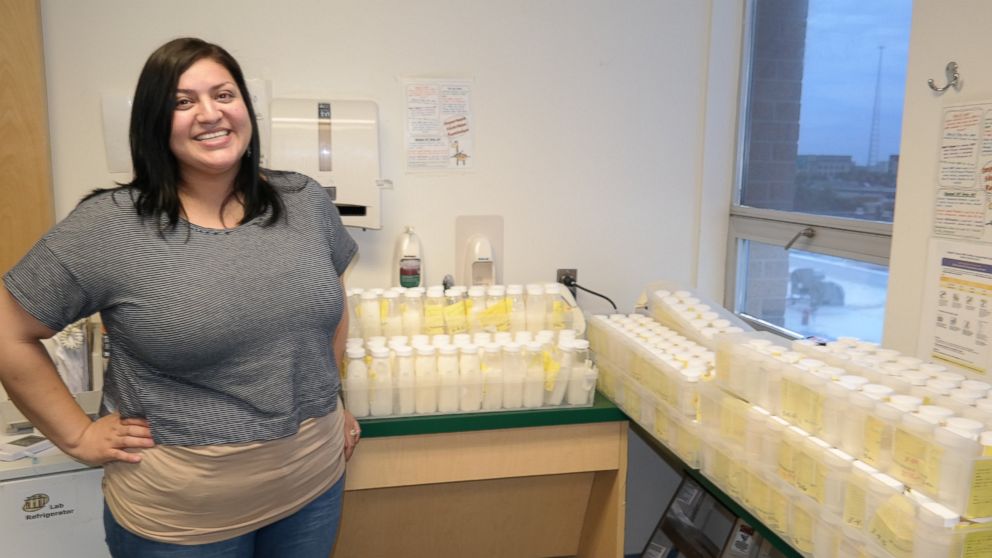 In case your baby is persistently refusing to consume stored breast milk or acts too fussy while feeding, check the taste of your milk for spoilage. When a breastfeeding baby refuses to feed, it is known as a nursing strike that may have several other reasons for it.
In case your baby is persistently refusing to consume stored breast milk or acts too fussy while feeding, check the taste of your milk for spoilage. When a breastfeeding baby refuses to feed, it is known as a nursing strike that may have several other reasons for it. In such cases, babies develop fever a few hours after ingesting the stored milk, often with additional symptoms, such as vomiting and diarrhea.
In such cases, babies develop fever a few hours after ingesting the stored milk, often with additional symptoms, such as vomiting and diarrhea. The milk can stay in the refrigerator at 40°F (4°C) for four to six days. However, do not move the bottle to the freezer after six days to extend its storage life. When frozen immediately after pumping, the milk should preferably be consumed within six months if the freezer is separate from the refrigerator and two weeks if the freezer is inside the refrigerator (2). Always place freezer milk at the back of the freezer and never on the door.
The milk can stay in the refrigerator at 40°F (4°C) for four to six days. However, do not move the bottle to the freezer after six days to extend its storage life. When frozen immediately after pumping, the milk should preferably be consumed within six months if the freezer is separate from the refrigerator and two weeks if the freezer is inside the refrigerator (2). Always place freezer milk at the back of the freezer and never on the door. 
 .
. During storage, changes in one or more of these components cause a change in the appearance, smell and taste of breast milk.
During storage, changes in one or more of these components cause a change in the appearance, smell and taste of breast milk. 

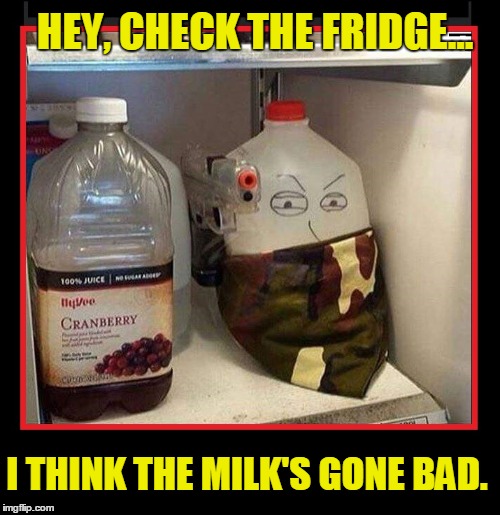 (four) .
(four) .  If you notice that your baby is constantly throwing up, frequent watery stools after feeding, or showing other symptoms of digestive problems, check your breast milk and contact your pediatrician.
If you notice that your baby is constantly throwing up, frequent watery stools after feeding, or showing other symptoms of digestive problems, check your breast milk and contact your pediatrician.  (four) .
(four) . 

 In addition, it prevents the production of unwanted milk.
In addition, it prevents the production of unwanted milk. 


 (Jones & Tully, 2005)
(Jones & Tully, 2005)
 203).
203).
